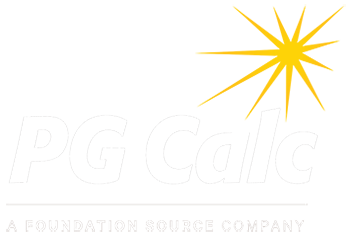Breaking News: Late Monday, June 16, 2025, the Senate Finance Committee released its proposed revisions to the One Big Beautiful Bill Act. Among the proposed changes are:
Bear in mind, the Senate still must vote on the proposed legislation, and then the Senate and House versions will need to be reconciled. The majority are still pushing to pass the final bill before the July 4th holiday. In other words: “Stay tuned!” |
Just after sunrise on May 22, 2025, the House of Representatives passed HR 1, “The One Big Beautiful Bill Act” by a vote of 215 to 214. Now, the Senate is considering the 1,038-page bill and proposing changes which will go back to the House for further consideration. Under the regular order, this back-and-forth process will continue until both chambers reach agreement on a final bill which then goes to the President for signature. The Administration’s announced ambition is to sign the bill into law by Independence Day.
The One Big Beautiful Bill is structured as a “reconciliation bill,” a move that allows it to avoid the possibility of a filibuster in the Senate and pass with a simple majority. However, the rules governing the reconciliation process limit the items that can be included in the bill. (You can find a brief explanation of the reconciliation process here.) Complicating matters: reaction to the One Big Beautiful Bill has been sharply divided, and some House members have acknowledged they were not aware of some of the details included in the One Big Beautiful Bill when they voted in favor of it.
The Long and Short of It
We’re still a long way from knowing exactly what might be signed into law. Nevertheless, here is a summary of some of the provisions – as passed by the House – that could affect charitable giving.
On the tax side, the One Big Beautiful Bill is mostly an extension of provisions of the Tax Cuts and Jobs Act of 2017 (the “Trump tax cut”), with certain enhancements.
- The gift and estate tax exemption amount would increase from $13,990,000 for 2025 to $15,000,000 for 2026, with inflation adjustments each year thereafter.
- For taxpayers in the 37% tax bracket who itemize deductions (including the charitable deduction), the tax savings from the itemized deductions would be capped at 35% starting in 2026.
- The higher standard deductions would continue, with a three-year boost in 2026 to 2028: $1,000 for single filers, $2,000 for joint filers, and $1,500 for heads of household.
- The 60% of adjusted gross income (AGI) limitation on the charitable deduction for contributions of cash would revert to 50%.
- A corporation would be able to deduct only charitable contributions that exceed 1% of the corporation’s taxable income. (The current limit on corporate charitable deductions of 10% of taxable income would remain.)
Although these changes do not directly affect charitable gift planning, the increased standard deduction amounts, lower AGI limit, and cap on the value of itemized deductions could have a modest impact on tax incentives for charitable giving.
In addition, the legislation would provide a temporary non-itemizer deduction for charitable contributions. However, the impact on charitable giving is questionable because the non-itemizer deduction would be capped at $150 for individuals and $300 for joint filers and contributions to donor advised funds would not be eligible.
Additional Impacts on Charities
Beyond these provisions, the One Big Beautiful Bill includes a grab bag of items that would affect charitable organizations including new or increased taxes on certain endowment funds and private foundations:
- An excise tax would be due on the net investment income earned on endowment funds held by private colleges or universities, excluding religious institutions. The tax rate on endowments would depend upon the value of the endowment per enrolled student:
- 1.4% for endowments valued at $500,000 to $750,000 per student
- 7.0% for those valued at $750,000 to $1,250,000 per student
- 14% between $1,250,000 to $2,000,000 per student
- 21% if more than $2,000,000 per student
- For private foundations with assets above $50 million, the tax rate on net investment income would be increased:
- 1.39% – less than $50 million (current rate)
- 2.78% – $50 million to $250 million
- 5.0% – $250 million to $5 billion
- 10% – $5 billion and above
(Note that these taxes reduce the amount available for charitable purposes. In upper ranges, the additional taxes could reduce available investment return to a level below inflation, stifling the effectiveness of larger endowments and private foundations.)
Other Provisions Include:
- Increasing unrelated business taxable income for transportation or parking fringe benefits (with an exception for religious organizations).
- Expanding the tax on excess compensation to apply to all employees earning more than $1 million (currently capped at five employees).
At best, the path to enactment of the One Big Beautiful Bill is unclear. Given today’s political climate, we won’t even hazard a prediction. Instead, we’ll just close by saying, “stay tuned!”

